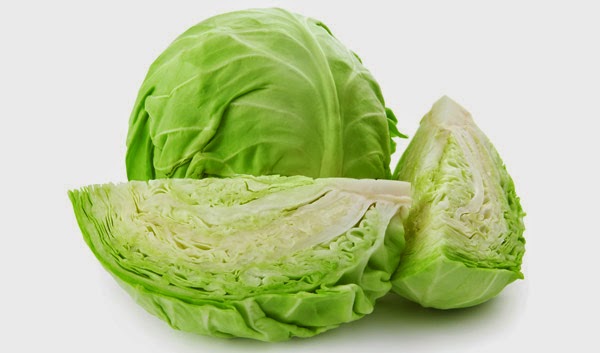“Without sufficient intake of antioxidants, our oxygen metabolism can become compromised, and we can experience a metabolic problem called oxidative stress. Chronic oxidative stress in and of itself can be a risk factor for development of cancer.”
Anti-inflammatory Properties
Anthocyanin is plentiful in red cabbage and is a very effective anti- inflammatory. This is the plants natural pigment which gives it its color. Anthocyanin can also improve brain function, heart health and protect against cancer. ARS has found anthocyanin to have twice as much antioxidants as Vitamin C which protects the body from oxidant stress.
This natural pigment also changes the function of fat cells which may help fight the symptoms of metabolic syndrome (heart conditions and diabetics).
Glucosinolates
Glucosinolates are phytochemicals that break down into cancer-preventing agents. One of these substances, Indole-3-carbinol, stops the cycle of breast cancer cells.
In the lining of the colon and bladder, isothiocyanate combine with amino acid N-acetylcysteine and antioxidant glutathione. This forms the anti-cancer agent and either provides the cells with extra glutathione, or causes the cells to produce more of their own.
The George Mateljan Foundation explained:
” … glucosinolates are cabbage’s trump card with regard to “anti-cancer” benefits. The glucosinolates found in cabbage can be converted into isothiocyanate compounds that are cancer preventive for a variety of different cancers, including bladder cancer, breast cancer, colon cancer, and prostate cancer.”
Cabbage Is Rich in Vitamin K1 and B Vitamins
K1 is a fat soluble vitamin that assists with blood clotting and bone metabolism. K1 is also known to prevent Alzheimer’s by limiting neuron damage. One serving of cabbage has 85 percent of your daily requirement of vitamin K1.
Cabbage contains folate, Vitamin B1, Vitamin B5 and Vitamin B6. They slow brain shrinkage by as much as seven-fold in the parts of the brain known to be affected by Alzheimer’s disease.
Digestive Benefits and Ulcer-Healing Properties
Cabbage juice is a fantastic treatment for stomach ulcers. It lines the stomach with a group of mucilaginous polysaccharides that protect itself from its own stomach acid. Having a few teaspoons of cabbage juice before eating, will do wonders to improve your digestion. It is not advised to drink more than 250 ml daily, for more than a month at a time (it can interfere with the thyroid hormone). Glucosinolates, isothiocyanates (anti-inflammatory), antioxidant polyphenols, and the amino acid glutamine contained in cabbage may also have benefits for the stomach as well as digestion.
The Way You Prepare Your Cabbage Matters
Cabbage is best prepared as close to raw as possible to preserve its many nutrients. Use cut cabbage within the first few hours or it can loose 1/2 of its Vitamin C content. Steaming or sautéing your cabbage, or eating it raw in coleslaw and salads is the best option to maintain the most nutritional content. Cabbage can also be juiced and fermented to make sauerkraut.
Raw Cabbage Sauerkraut
Raw sauerkraut is made from raw cabbage and a little help from a probiotic bacteria. Large amounts of live cultures of lactobacillus rhamnosus JAAS8 are helpful at keeping belly bugs at bay and can help you loose weight.
The cabbage most used (white and green cabbage) when making sauerkraut is 10 times as effective in helping anti-cancer drugs stop the spread of MDA-MB-231, a type of breast cancer.
Sauerkraut that has been rinsed of its salt is a great addition to a diet for kidney failure, due to its extremely low amount of phosphorous.
I would like to add if I may, my favorite sauerkraut recipe for you to try!
Sauerkraut Recipe
TOTAL TIME: 5 HR
SERVINGS: MAKES 2 QUARTS
Ingredients:
4 pounds green cabbage, very thinly sliced on a mandoline or finely shredded in a food processor
1 Granny Smith apple—peeled, cored and very thinly sliced on a mandoline
2 tablespoons plus 1 teaspoon fine sea salt
1 tablespoon caraway seeds
1/2 tablespoon juniper berries (optional)
Instructions:
Combine all of the ingredients in a very large bowl. Squeeze the cabbage to release some liquid. Press a heavy plate on the cabbage to weigh it down and let stand at room temperature, tossing and squeezing the cabbage 4 or 5 more times, until it has released enough liquid to cover, about 4 hours.
Pour the cabbage and its liquid into a clean ceramic crock or tall glass container. Top the cabbage with a clean plate that just fits inside the crock. Place a glass or ceramic bowl on the plate and put a heavy can in the bowl; the cabbage should be completely submerged in its brine by at least a 1/2 inch. Cover the crock with a clean kitchen towel and set it in a cool, dark place to ferment for about 6 weeks.
Every 3 days, clean and replace the plate that sits on the cabbage, carefully skimming any foam or mold that forms on the surface of the liquid. Discard the cabbage and its liquid if it’s foul-smelling, or if anything brown, moldy or slimy has penetrated below what can easily be scraped off the surface. If too much liquid evaporates before the sauerkraut is sufficiently fermented, dissolve 1/2 teaspoon of sea salt in 1 cup of spring water and add it to the crock. When the sauerkraut is ready, it should have a light crunch and a bright, pleasantly tangy taste, with an acidity similar to that of a lemon.(http://livingtraditionally.com)





